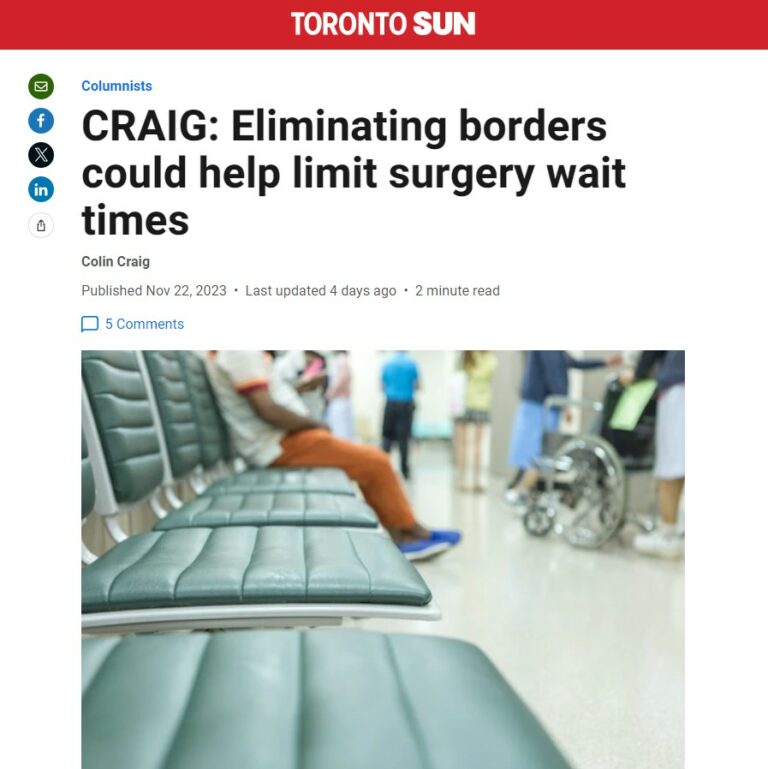Imagine if long surgical wait times in Canada could be reduced from a year or longer to just a couple of weeks.
If provincial governments copied a policy from the European Union (EU), we could see that happen for thousands of patients right across the country.
Consider the “Cross Border Directive” policy the EU passed in 2011. It allows all EU patients the right to travel to another EU country, pay for surgery and then be reimbursed by their home government. Reimbursements cover up to the same amount the patient’s home country would have spent on providing surgery locally.
For example, imagine Francois, a patient in France who requires knee surgery. Assume the surgery would cost the French government €10,000 to provide it locally, but the wait list is six months. Francois decides to pop over the border to Germany where a clinic has an opening next week and it also costs €10,000. After paying for the surgery, he is reimbursed by the French government.
For Francois, he gets to put an end to his crippling pain and return to work. For the French government, it costs the same and it now has another citizen working and paying income taxes. Win, win.
To be sure, travelling for surgery is not ideal. Most people would prefer to have surgery locally and most Europeans still choose that option. However, the EU’s policy does give patients an opportunity to put an end to their chronic pain, prevent cancer from spreading or address other serious health problems right away.
If Canada adopted this policy, provincial governments could allow patients to be reimbursed for surgery at private facilities in other provinces or developed countries — Kelowna, Houston and Seoul; the possibilities are immense.
Consider what Manitoba patient Max Johnson did in 2021. Faced with at least a year-long wait for knee surgery, he travelled to Lithuania and paid about $14,000 for surgery — far lower than what the Manitoba government typically spends for the same procedure ($21,000). Thus, there are times when provincial governments might actually save money by having policies like the EU’s in place.
On the other hand, if a particular surgery costs a patient more abroad than what the government pays locally, the patient pays the difference. This protects governments financially.
As you can see, this policy is cost-effective as it doesn’t really increase costs, it just shifts when the government pays for surgery — this year instead of next year.
Another benefit is that this policy especially helps low-income patients who lack resources to escape long waiting lists in Canada. The Cross Border Directive policy would empower them and suddenly they would have access to thousands of dollars.
Finally, this approach also benefits those who decide not to travel abroad for treatment. After all, they would move up a spot in line each time a patient ahead of them does decide to travel for care.
To be sure, the EU policy is imperfect. Patients have to pay for their own travel costs and going abroad for care is often not ideal. However, the EU policy would empower patients and help get them the care they require in a timely manner. Isn’t that the point of the system in the first place?
Colin Craig is president of SecondStreet.org, a Canadian think tank
This column was originally published in the Sun newspapers on November 22, 2023.



